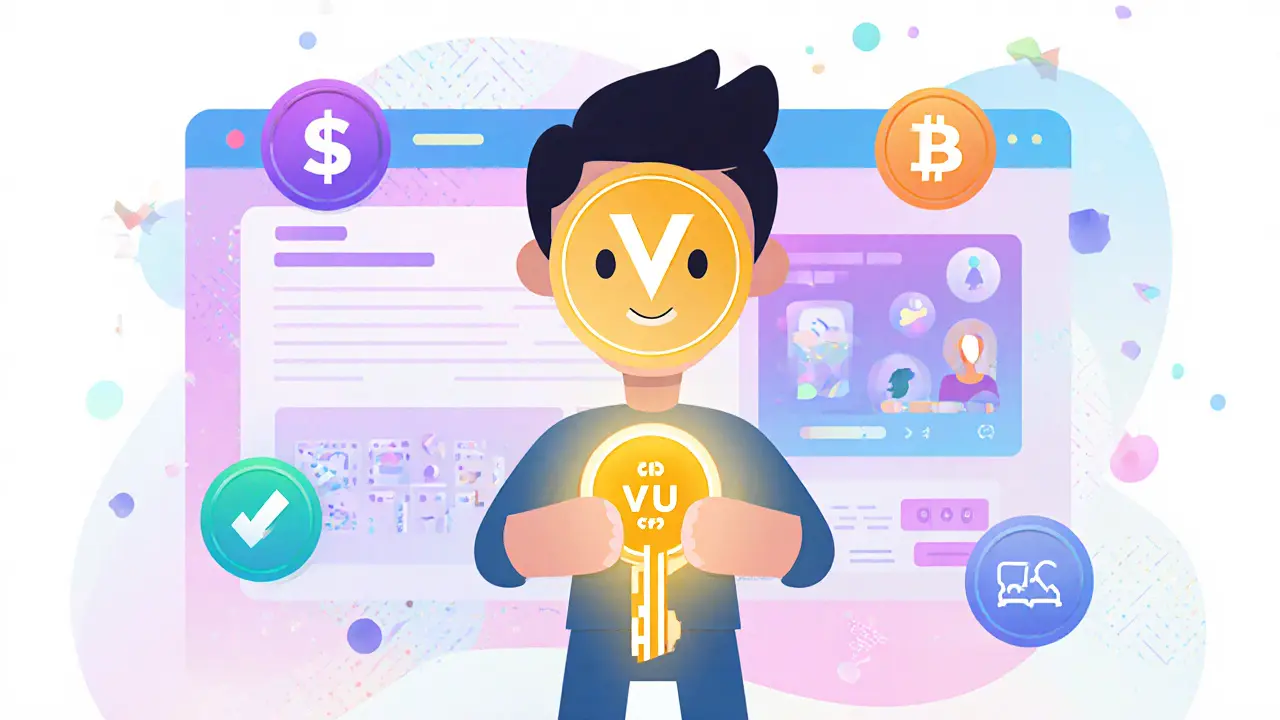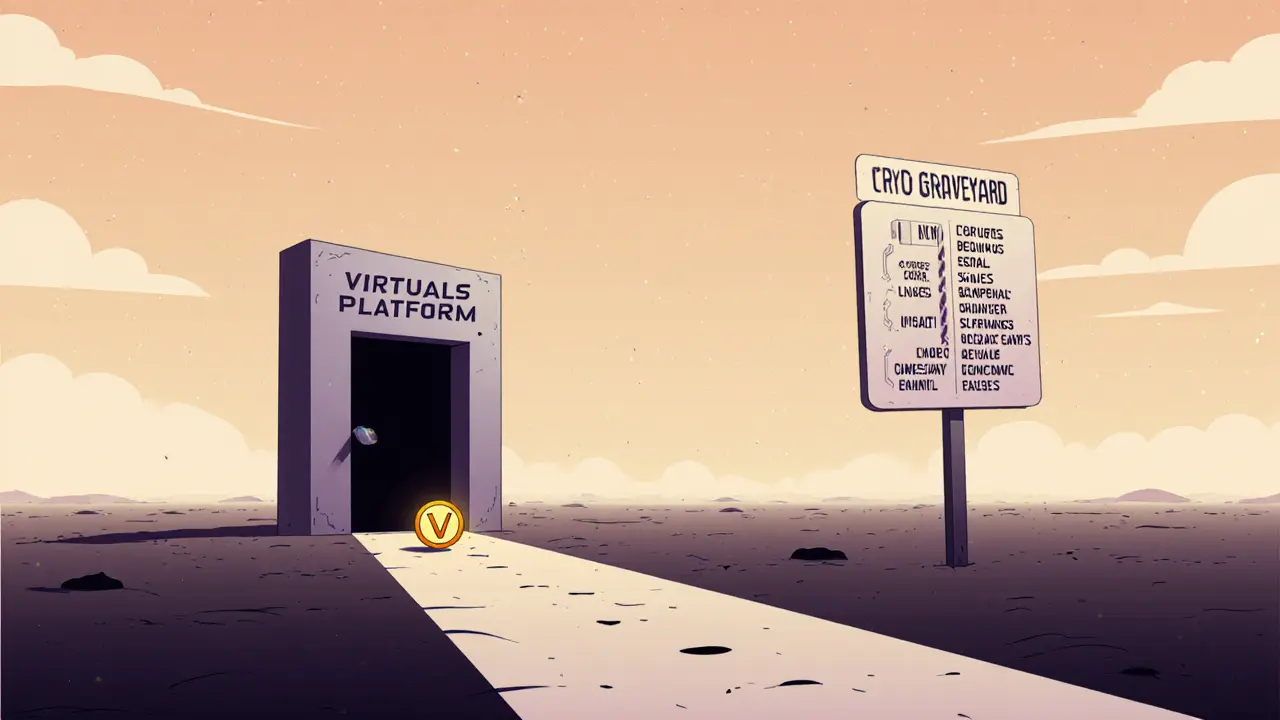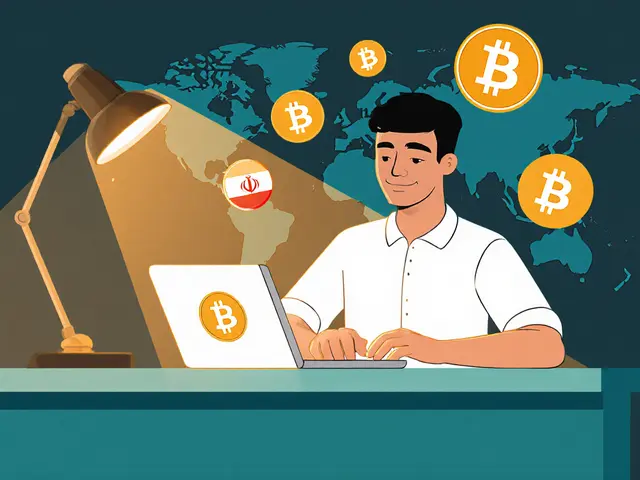Crypto Exchanges Accepting Iranian Users - 2025 Guide
A 2025 guide listing crypto exchanges that still accept Iranian users, covering domestic options, international platforms, fees, security, and recent regulations.
Read More

Calculate potential value based on Virtuals platform user growth scenarios
Enter values and click calculate to see potential outcomes
Velvet Unicorn by Virtuals (VU) isn’t a flashy new meme coin trying to ride the latest trend. It’s a utility token built for a specific platform - Virtuals - and its entire value hinges on whether that platform can grow beyond a niche audience. If you’ve heard of VU in passing, maybe from a Discord group or a low-volume exchange, you’re not alone. Most people don’t know what it does, why it exists, or whether it’s worth paying attention to. Let’s cut through the noise.
Velvet Unicorn, or VU, is a cryptocurrency token designed to work inside the Virtuals platform. Think of it like a digital coupon or in-game currency, but instead of buying skins or power-ups, you use VU to access creator tools, earn rewards for community activity, or trade digital assets built on the platform. It’s not meant to be a store of value like Bitcoin or a payment coin like Ethereum. It’s a functional key - you need it to unlock features.
It runs as an ERC-20 token on the Ethereum blockchain, which means it follows the standard rules for tokens on that network. But here’s the twist: some sources, including Coinbase, list it as operating on Base - Ethereum’s Layer 2 scaling solution. That’s not a contradiction. It likely means the Virtuals team has started moving transactions off Ethereum’s mainnet to reduce fees and speed things up, while keeping the token itself the same. This kind of shift is common as projects try to balance functionality with cost.
The total supply of VU is fixed at 994,343,723.301839 tokens. That number hasn’t changed since launch in 2021, and no more will ever be created. That’s a good sign - it means the team isn’t planning to dilute your holdings by printing more coins later. The circulating supply matches the max supply, so all tokens are already in circulation. That’s rare. Most tokens have a portion locked up for team members, investors, or future development. VU doesn’t. Everyone who holds VU holds a piece of the entire pie.
As of October 2023, the market cap hovered between $800,000 and $10 million, depending on the source. That’s tiny compared to top coins. Chainlink is worth over $5 billion. Even smaller utility tokens like MANA or SAND sit at hundreds of millions. VU’s market cap is less than 0.001% of the total crypto market. That makes it a micro-cap asset - high risk, high potential reward.
You won’t find VU on Binance, Coinbase Pro, or Kraken. It’s listed on just one or two smaller exchanges, mostly decentralized ones like Uniswap or PancakeSwap. CoinGecko says it trades on two markets. Blockworks Research notes it’s available on five trading pairs, mostly against USDT, TRC20 tokens, and other altcoins. That’s not a lot of liquidity.
What does that mean for you? If you try to buy $1,000 worth of VU, you’ll likely see the price jump as you buy. If you try to sell, you might not find enough buyers at the price you want. That’s called slippage. Users on Reddit and Trustpilot report this often - especially when trying to cash out after completing a project on Virtuals. One creator said they lost 15% of their value just from the trade execution.
The only real users are people on the Virtuals platform. That’s the catch. VU has no use outside of it. If you’re not creating digital avatars, selling NFTs, or engaging with the community there, VU means nothing to you. According to the project’s own blog, they had around 15,000 active users as of September 2023. That’s a small community. For comparison, Decentraland has over 2 million monthly users. The Virtuals platform isn’t competing with giants - it’s trying to survive in the shadows.
But within that group, there’s real engagement. Some users say VU changed how they monetize their digital art. Others use it to vote on platform features or earn rewards for inviting new creators. It’s not just speculation - there’s a functional layer. But it’s fragile. If user growth stalls, the token’s value drops with it.
Let’s be blunt: if you’re looking for a safe bet, skip VU. It’s not for investors. It’s for participants.
If you’re already using Virtuals - you make digital art, you’re into avatar customization, you like building in Web3 spaces - then holding VU makes sense. You’ll need it to use the tools. You’ll earn it by contributing. You might even benefit if the platform grows.
But if you’re buying VU because you saw a 24% price spike last week? That’s gambling. The token’s volatility is extreme. One day it’s $0.008, the next it’s $0.012, then back down. That’s not growth - that’s noise. Analysts at BeInCrypto and CoinMarketCap warn that tokens like this, with no clear team, limited documentation, and no real-world use outside their own ecosystem, have a 65% failure rate within 18 months.
The only thing keeping VU alive right now is the platform’s roadmap. They’ve announced new creator tools, community voting features, and deeper integration with NFT marketplaces. If those features actually launch and attract new users, VU could see real demand. If they don’t? The token becomes a ghost.
There’s one real upside: if Virtuals explodes, VU could too. Imagine if they hit 50,000 active users - that’s 3x their current base. If they partner with a major NFT marketplace or get featured in a mainstream Web3 event, demand could spike. Analysts estimate a 300-500% price increase is possible under that scenario.
Also, VU is one of the few tokens with a fixed supply and no team allocations. That’s rare. Most tokens have 10-20% locked for founders. VU doesn’t. That means every token in circulation is owned by users - not insiders. That’s a small but meaningful point of trust.

Only if you’re already using Virtuals and plan to keep using it. If you’re not on the platform, don’t buy VU. You’re not investing - you’re speculating on a bet that someone else will pay more for it later. And with a token this small, that’s a dangerous game.
If you’re a digital artist, a Web3 creator, or someone who wants to build in a community-driven space, VU might be worth a small allocation - say, $50 to $100 - as a tool, not an investment. But don’t put your rent money in it. Don’t chase pumps. Don’t believe the hype. Treat it like a membership card to a club you actually want to join.
Otherwise? Walk away. There are hundreds of better, more transparent projects out there. VU isn’t one of them - unless you’re already inside the ecosystem.
Warning: Always verify the token address. Scammers create fake VU tokens with similar names. The real one is only listed on the official Virtuals website.
The Virtuals team has a roadmap through mid-2024. They’re adding:
If these features launch on time and attract new users, VU could gain traction. If they don’t - or if the team goes quiet - the token will fade into obscurity. Crypto is full of tokens that looked promising but vanished when the hype died. VU is one of them - for now.
Watch the user numbers. Watch the roadmap. Watch the team. If nothing changes, VU will stay a quiet, low-volume token - interesting to a few, irrelevant to most.

A 2025 guide listing crypto exchanges that still accept Iranian users, covering domestic options, international platforms, fees, security, and recent regulations.
Read More
Learn how to join Zamio's 2025 ZAM token airdrop, get details on the MEXC and CoinMarketCap campaigns, and understand the rewards, requirements, and risks.
Read More
Learn what Shrimp Paste (SHRIMP) crypto coin actually is, explore its three variants, compare specs, market data, and risks, and get a clear guide on how to avoid the ticker confusion.
Read More
Write a comment